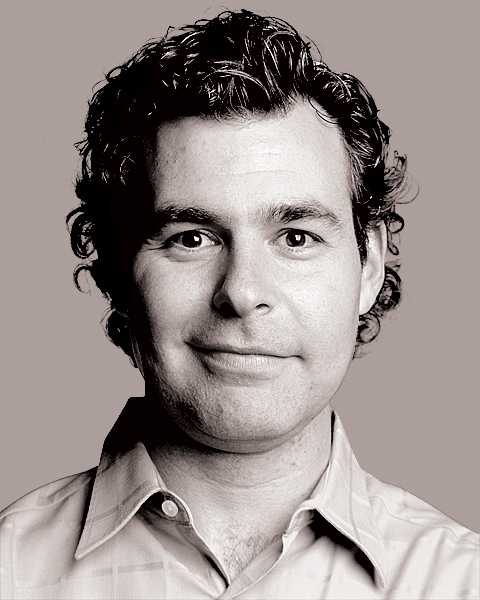The Mirage To Leave Las Vegas With A Rarity: Some Dignity

At first the whole concept seemed shocking and offensive: The Mirage, a landmark of historic and emotional proportions for millions of Las Vegas fans, is destined to be gutted, stripped to its bones and reincarnated as a Hard Rock Resort. The brand, which never quite clicked in its off-Strip site to the point that it’s now a not-quite-clicking Virgin Hotel-Casino, will move into a prime skyline spot upwind from Caesars.
Evidently, the Hard Rock folks think that the thing their old place was missing was a decent location (probably true) and a gimmicky guitar-shaped all-suite tower (OK, the renderings do look cool). So now that Hard Rock International’s $1.1 billion purchase of the legendary property has been finalized, the to-do list includes stripping the Mirage down to its concrete shell and going from there.
Read more from the State of Play column:
- Hollywood Shows Its Vegas Problem Again With ‘Elvis,’ ‘Poker Face’ And ‘H
acks’ - A Gambler’s Love Letter To March Madness
- The Next Mayor Of Las Vegas Refuses To Leave Anything To Chance
- March Madness Maniac Elaine Wynn Offers Some NCAA Bracket Advice
- No Winners When It Comes To Oscars Betting
- It’s Time To Boot Donald Trump From Gambling’s Hall Of Fame
- Annie Duke Has Moved On, And Poker Is Poorer For It
- A Sports Betting Kiosk Inside Your Piggly Wiggly? Bet On It.
- Jerry Green’s First Super Bowl Viewing Like The Rest Of Us
- Would Vegas ‘What Happens Here, Stays Here’ Campaign Happen Today?
- Legal Online Poker, Once All The Rage, Flirts With Irrelevance
- 35 Years Later, We Live In Jimmy The Greek’s Sports Betting And Racist World
- Ohio Sportsbooks Mischief Endangers Legalization Elsewhere
A history of replacing Vegas history
How could this be? I harrumphed. How can something so seminal to the modern concept of a casino-resort in Nevada, across California and in destinations from Miami to Macau, be ready for its erasure?
Yet, as with such OGs as Eva Peron, Jesus Christ and Chris Farley before it, the Mirage won’t live past 34. So far there’s not that much known beyond the fact that the famous volcano and Cirque du Soleil’s very best production, The Beatles’ Love, remain through at least 2023 and the Secret Garden & Dolphin Habitat is (blessedly) already gone. Other than that we’ve got a promise from Hard Rock CEO Jim Allen that this won’t be quick, simple or cheap.
Still, the entire endeavor baffled me as someone who arrived in Vegas in 1996 and bore witness to the implosions of the Hacienda, the Stardust, the Sands and the Frontier. All were pale imitations of their earlier glory having been left to decay and molder until blowing them to smithereens was the only rational Vegas-style thing to do with them. (OK, fine, only the Stardust and the Sands actually ever had any glory. Still.) Those were mercy killings.
Don’t get too attached to Vegas Strip casinos
The Mirage is not decrepit – and you know this because they’re not blowing it up. Yes, it had steadily shifted from the top-of-the-market when it opened in all its fabulousness in 1989 to a middle-tier option by the time it was 20. That’s when its owners, previously MGM Mirage, were opening the mind-boggling CityCenter and used the occasion to dump Mirage from their corporate name.
Still, it remains pretty popular. On VegasMate, the review app, the Mirage is the No. 7 most searched and most “added to trip plans” of all hotels over the past year, says the app’s owner and programmer Hunter Hillegas. (Bellagio is No. 1.) Listeners of the seminal Las Vegas podcast “Five Hundy By Midnight” have chimed in in droves with laments about all this, too, to which co-host Tim Dressen reminds them:
“Nothing on the Las Vegas Strip is permanent, and getting attached to anything on the Strip is sure to result in disappointment.”
Fair enough. And you’d really have to be pretty old by now – as I am, I guess – for that first walk-through of the Mirage’s tropical forest to feel transformative. But my goodness what a shock to the senses it was back in the day before the desert also boasted Venetian gondolas, dancing fountains, and cobblestone Parisian sidewalks.
Its visionary developer, Steve Wynn, is an industry pariah now because of allegations of sexual misconduct, so perhaps it’s problematic to be fascinated by anything he says. Yet if you want to understand why the Mirage mattered and how it came to exist, here’s his lengthy humblebrag to me in 2010:
“We had a book that was a black book, a folder, that was about 120 pages. In it was an exhaustive examination of three hotels in Las Vegas: the Hilton, Bally’s and Caesars. Each of those studies showed how food and beverage and convention sales at the Hilton were ‘X’ and worked. They showed how retail and tour and travel at Bally’s produced a result. And it showed how entertainment and fanciful public areas had worked at Caesars. And in this book was the most comprehensive financial analysis that showed that what we were doing already existed in Las Vegas in three separate hotels: 2,100 rooms at the Hilton, 2,000 rooms at Bally’s and 1,300 rooms at Caesars. Every single aspect of our program was responsible for huge success at one part of those hotels or the other, but they did not exist in one place.”
Of course, they sure do now.
Reminiscing the evolution of Las Vegas
Lots of folks will join me in sparing a thought for the Mirage when its era closes. Hillegas, for one, says, “Is distraught too strong? I’m bummed… I totally understand progress and all that, but I’m pretty sad about it.”
Casino consultant and Vegas historian Oliver Lovat bemoans the fact that “in the future when I’m taking college students around talking about the evolution of Las Vegas, there is a gap or there will be a gap in the lineage.”
And Alan Feldman, the original spokesman for the Mirage and now a distinguished fellow in responsible gaming at UNLV’s International Gaming Institute, says:
“I’d love to see the Mirage last another several generations. It doesn’t feel as though it’s run its course just yet. However, Las Vegas has always thrived by adapting and making changes. Plenty of iconic hotels have given way to major new developments. The Sands, Dunes, Desert Inn all were transformed into something far greater. I might have guessed at another property to join that list before the Mirage would, but I think Hard Rock sees the value in the underlying infrastructure, some available land to do new things and the opportunity to put a huge Guitar Hotel Tower right at the heart of the Strip. So, there are many wonderful memories that I associate with the Mirage and I look forward to making new ones at Hard Rock.”
I get all of that. I rolled my eyes aplenty in my misspent Vegas youth when old-timers spoke of the greatness of the heyday of the Sahara or the Desert Inn or the Imperial Palace. (OK, nobody mourns the IP. Just checking that you’re still reading.) “I like to think there’s an extremely old Vegas nerd somewhere complaining that the Strip hasn’t been the same since it was paved,” Dressen says.
A
nd if this is how this has to go, I suppose there are worse fates. Vegas used to be where washed-up performers went to live out the backside of their careers. Old casino properties, too, mimicked that trajectory, left to decline until the only kind thing to do was to give it one last big bang and move on.
The Mirage, however, gets to go out before that cycle kicks in. And its name, still the cleverest and most fitting one for a lush megaresort built on one of the world’s driest tableaux, could find a new home either in real life – a rebranding of the post-massacre Mandalay Bay seems in order – or as an online property.
“I love the Hard Rock brand, I think the property will do very well, it will be a magnificent addition to the cityscape,” Lovat says. “But it’s just a shame that them coming means the Mirage goes, y’know?”
Yes. Yes I do.








